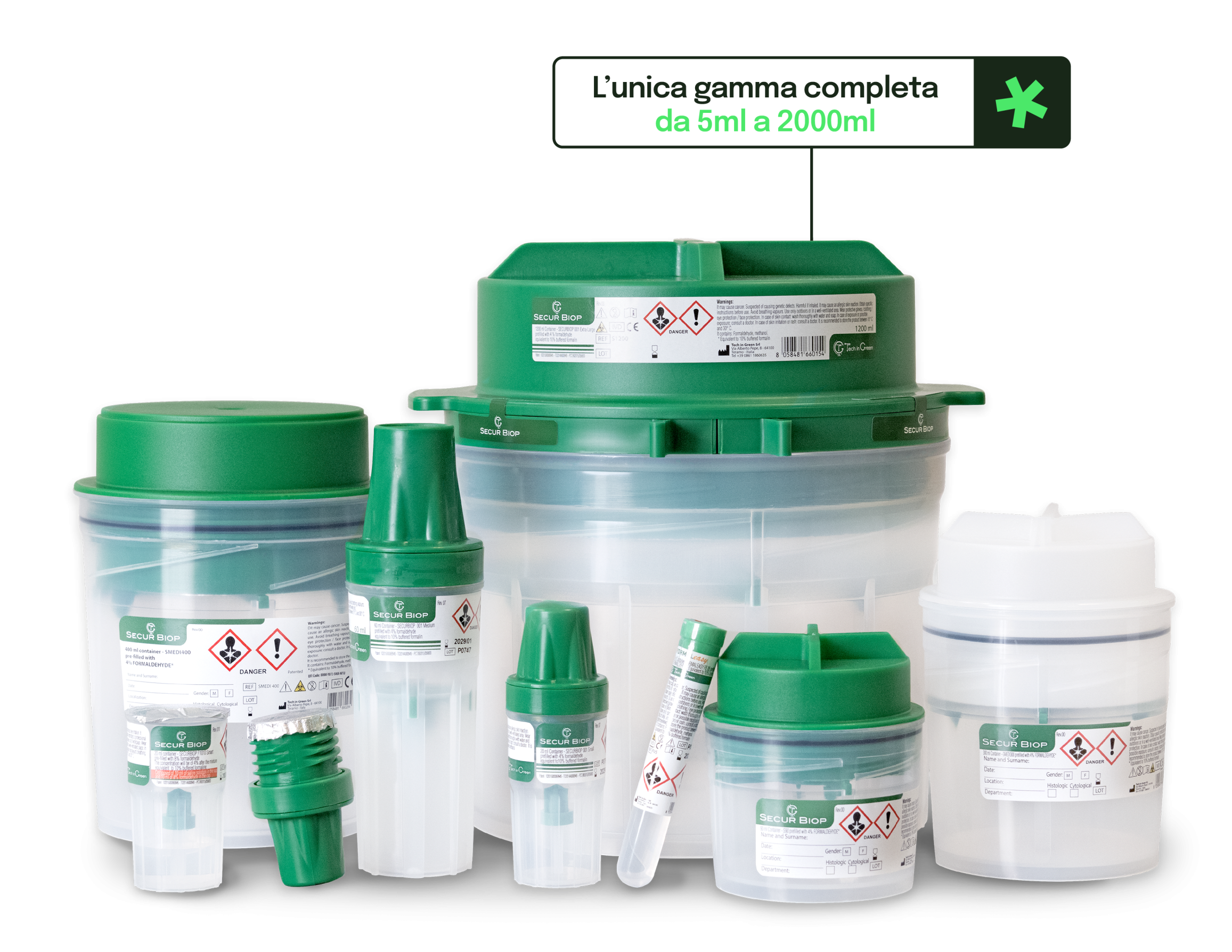Formaldehyde
and Its Risks
The airtight seal of the containers, combined with their safe and functional structure, ensures the collection, transport, and preservation of biopsy samples in accordance with the highest standards of safety and efficiency. All our devices are specifically designed and manufactured to prevent the release of formaldehyde vapors and liquids—a substance reclassified as carcinogenic as of January 1st, 2016 (EU Regulation No. 605/2014)—thus contributing to a safe working environment for all healthcare personnel.
Timeline
IARC classifies formaldehyde as a human carcinogen (Group 1), based on its ability to induce nasopharyngeal tumors.
2006
IARC confirms this classification and extends it to the induction of leukemia, particularly myeloid leukemia (Baan, 2010).
2009
Formaldehyde is also classified as a mutagenic and carcinogenic substance under the European Union’s CLP Regulation.
2016
Directive (EU) 2019/130 amends Directive 2004/37/EC, includes formaldehyde among substances subject to binding occupational exposure limits, and strengthens the protection of workers exposed to carcinogens and mutagens.
2019

European
Guidelines
Formaldehyde, a volatile organic compound widely used in various industrial products and processes, is classified by the Committee for Risk Assessment (RAC), since 2012, as a Category 1B carcinogen and Category 2 mutagen. This classification indicates that there is sufficient evidence linking formaldehyde exposure to cancer development in humans. The European Union confirms this classification with the entry into force, on January 1st, 2016, of Regulation (EU) No. 2015/491, which amends the CLP Regulation (Classification, Labelling and Packaging) through its 6th Adaptation to Technical Progress, officially recognising formaldehyde as a carcinogenic substance. Other countries are expected to follow this classification, particularly Canada and the United States, where the classification and possible ban on the use of formaldehyde-releasing substances in metalworking fluids have already been under discussion for several years.
Our
Closed-System
Technology
Since formaldehyde has been classified as a carcinogenic substance, the handling of biopsy samples requires increasingly safe and specialized solutions. SecurBiop® and FormalEasy® represent a concrete innovation in terms of protection and reliability. The adopted closed-system technology prevents any type of contact with formaldehyde, whether in liquid or vapor form, ensuring maximum safety for healthcare personnel and the working environment. It is a system specifically designed to ensure continuity, efficiency, and regulatory compliance. Thanks to the closed-system technology, the following objectives are achieved: • Elimination of exposure risk, by preventing all contact with formaldehyde, both for personnel and the surrounding environment. • Optimization of operational processes, through an intuitive system that simplifies sample management. • Guarantee of regulatory compliance, in line with the most recent European directives on workplace health and safety.
Products

The Innovative
O-ring
Guaranteed Seal, Enhanced Safety: the Innovative O-Ring SecurBiop® containers stand out as the only products on the market equipped with an integrated O-ring, a key technical component that ensures not only the airtight sealing of the system, but also maximum operator protection. During the critical phase when formalin is released, the O-ring plays a vital role: it prevents the escape of potentially hazardous vapors, protecting healthcare personnel from both direct and indirect exposure to formaldehyde. This unique design choice reflects Tech In Green’s commitment to providing advanced solutions that integrate functionality, safety, and compliance with the most recent European occupational health and safety regulations.